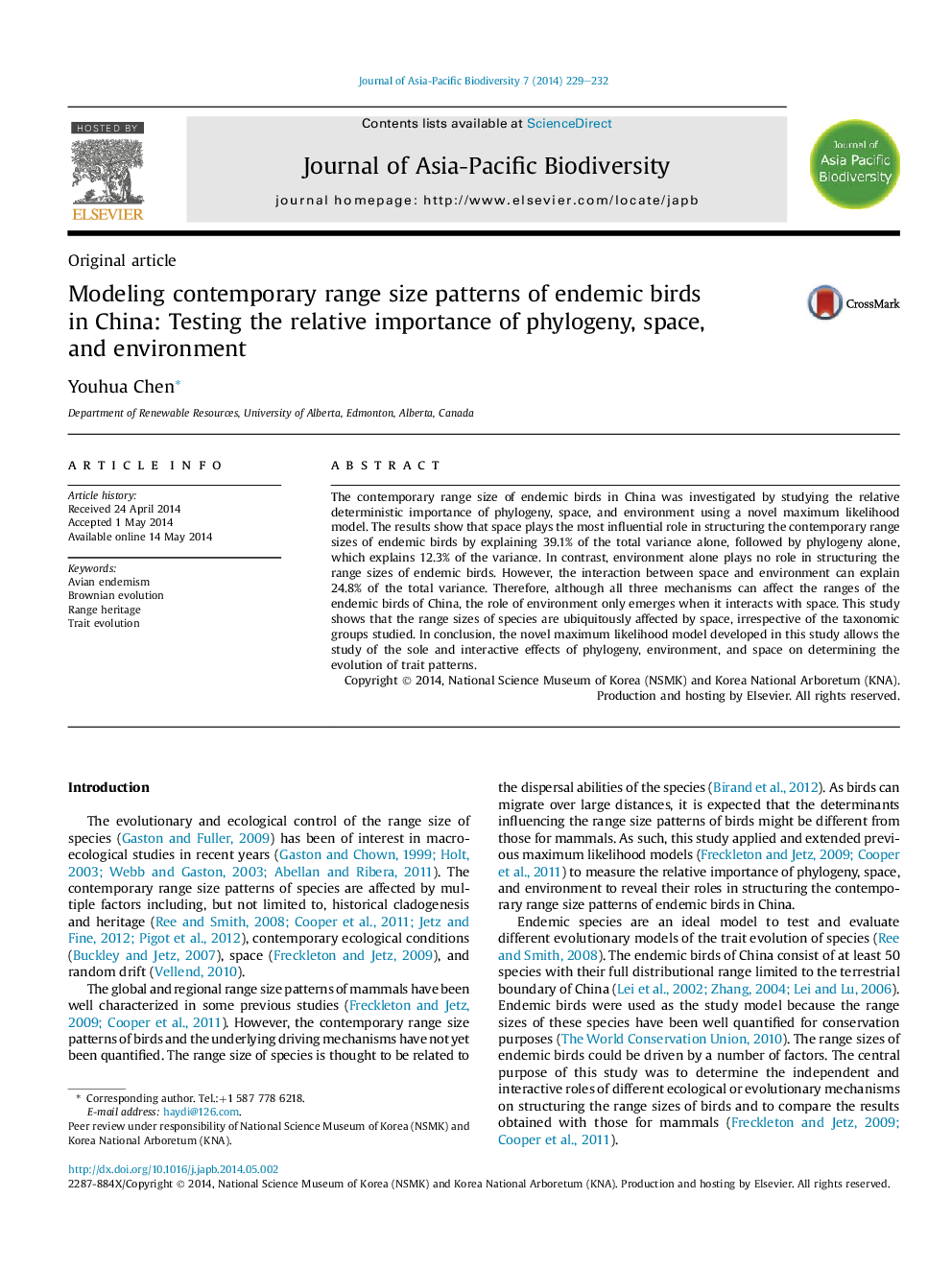| Article ID | Journal | Published Year | Pages | File Type |
|---|---|---|---|---|
| 4395135 | Journal of Asia-Pacific Biodiversity | 2014 | 4 Pages |
The contemporary range size of endemic birds in China was investigated by studying the relative deterministic importance of phylogeny, space, and environment using a novel maximum likelihood model. The results show that space plays the most influential role in structuring the contemporary range sizes of endemic birds by explaining 39.1% of the total variance alone, followed by phylogeny alone, which explains 12.3% of the variance. In contrast, environment alone plays no role in structuring the range sizes of endemic birds. However, the interaction between space and environment can explain 24.8% of the total variance. Therefore, although all three mechanisms can affect the ranges of the endemic birds of China, the role of environment only emerges when it interacts with space. This study shows that the range sizes of species are ubiquitously affected by space, irrespective of the taxonomic groups studied. In conclusion, the novel maximum likelihood model developed in this study allows the study of the sole and interactive effects of phylogeny, environment, and space on determining the evolution of trait patterns.
